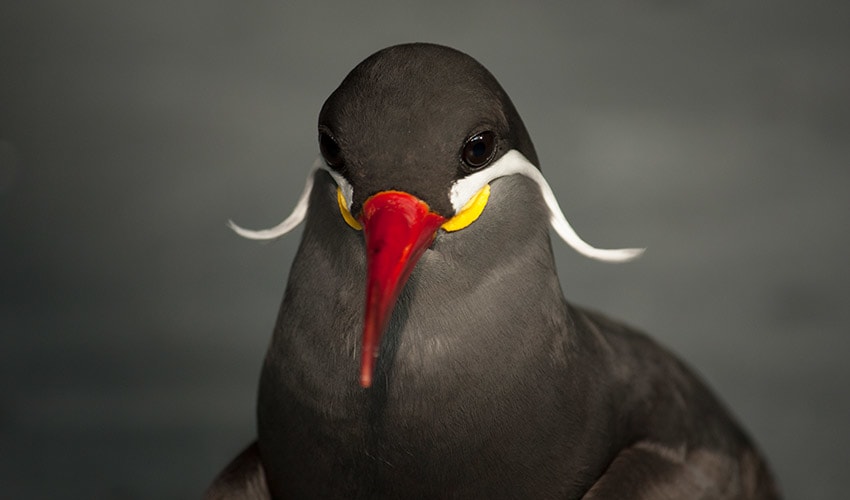Found along the coasts of Peru and Chile, this medium-sized tern is instantly recognizable thanks to its flamboyant features: dark slate-gray plumage, a bright orange-red bill and legs, and most famously, a pair of long, curled white mustache-like feathers that sweep elegantly from each side of its face. This “handlebar mustache” has made the Inca tern a favorite among birdwatchers and photographers, and it also inspired its name, a nod to the ancient Inca civilization of the Andes. With its dashing look, the Inca tern has often been described as one of the most stylish birds in the world.
This cold ocean current is rich in nutrients, supporting some of Earth’s most productive marine ecosystems. Inca terns thrive here, feeding primarily on anchovies and other small schooling fish, which they catch by plunge-diving into the sea with precision. They are powerful fliers and spend much of their time skimming along the waves, searching for food. Because they rely so heavily on fish abundance, their populations rise and fall with the health of the Humboldt Current, making them indicators of ocean conditions in the region.
Inca terns nest in colonies, often on rocky cliffs, guano deposits, or abandoned burrows made by other seabirds. Their colonies can number in the thousands, filling the air with a chorus of harsh, catlike mews and squawks.
Its signature mustache isn’t just for show—it is thought to be a signal of health and fitness. This makes their appearance not only stylish but also practical in courtship. They are also highly social birds, often seen in large, chattering flocks, which can create dazzling sights as hundreds swoop in unison over the ocean. Because of their reliance on fish populations, they are deeply connected to the Peruvian anchovy fishery—the world’s largest single-species fishery.
Distribution
 Chile
Chile Colombia
Colombia Ecuador
Ecuador Panama
Panama Peru
PeruAnything we've missed?
Help us improve this page by suggesting edits. Glory never dies!
Suggest an editGet to know me
Terrestrial / Aquatic
Altricial / Precocial
Polygamous / Monogamous
Dimorphic (size) / Monomorphic
Active: Diurnal / Nocturnal
Social behavior: Solitary / Pack / Flock
Diet: Carnivore / Herbivore / Omnivore / Piscivorous / Insectivore
Migratory: Yes / No
Domesticated: Yes / No
Dangerous: Yes / No




